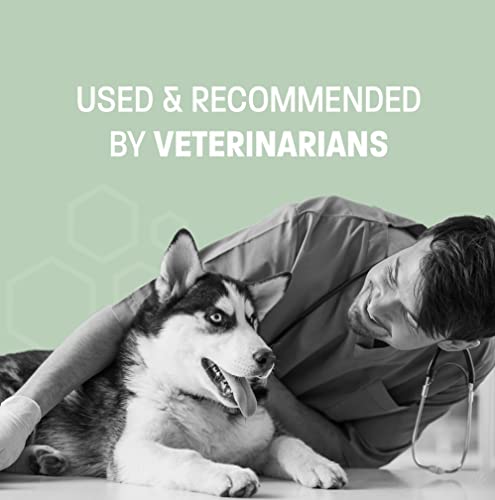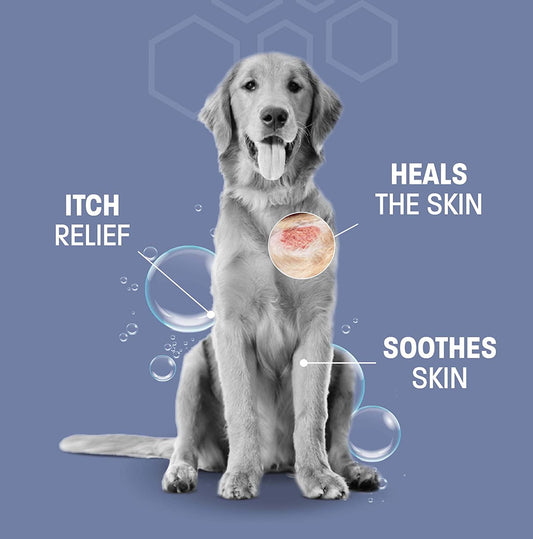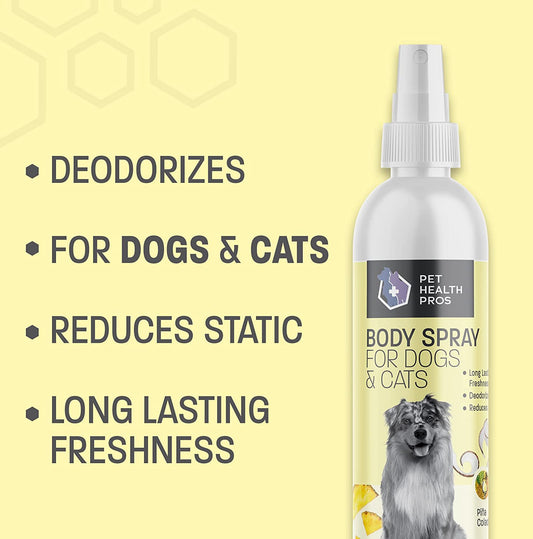The Essential Pet Grooming Routine
Introduction
Taking care of your pet goes beyond providing them with food and shelter. Regular grooming is an essential part of their overall well-being. Not only does it keep your furry friend looking and smelling fresh, but it also helps maintain their health and prevents various issues. In this article, we will explore the essential pet grooming routine that every pet owner should follow. From brushing their fur to cleaning their ears, we'll cover all the important aspects of keeping your pet clean and healthy.
Table of Contents
- Importance of Regular Pet Grooming
- Brushing and Bathing
- Nail Trimming and Paw Care
- Dental Hygiene
- Ear Cleaning
- Eye Care
- Anal Gland Expression
- Dealing with Shedding
- Controlling Fleas and Ticks
- Grooming for Specific Breeds
- Pet Grooming Tools and Products
- Grooming Tips for Puppies and Kittens
- Professional Pet Grooming Services
- Common Pet Grooming Mistakes to Avoid
- Conclusion
- FAQs
1. Importance of Regular Pet Grooming
Regular grooming is crucial for maintaining your pet's overall health and well-being. It helps prevent matting, tangling, and skin irritations. Grooming also allows you to closely inspect your pet's body for any signs of abnormalities such as lumps, wounds, or parasites. Additionally, grooming sessions provide an excellent opportunity for bonding with your pet and strengthening the owner-pet relationship.
2. Brushing and Bathing
Brushing your pet's fur regularly helps remove dirt, loose hair, and tangles. It also stimulates blood circulation and distributes natural oils, keeping their coat healthy and shiny. The frequency of brushing depends on your pet's breed and coat type. Bathing should be done as needed, using a pet-friendly shampoo that suits their skin and coat. Avoid over-bathing as it can strip the natural oils from their fur, leading to dryness and irritation.
3. Nail Trimming and Paw Care
Trimming your pet's nails is an important grooming task to prevent overgrowth and discomfort. Use a pet nail trimmer and be cautious not to cut the quick, which is the sensitive part of the nail containing blood vessels. Regularly check your pet's paws for any foreign objects, cuts, or infections. Keeping the paw pads clean and moisturized is essential for their comfort and mobility.
4. Dental Hygiene
Dental care is often overlooked but plays a vital role in your pet's overall health. Regularly brushing your pet's teeth with a pet toothbrush and toothpaste helps prevent plaque buildup, gum disease, and bad breath. Dental chew toys and treats designed to promote oral health can also be beneficial. If needed, consult your veterinarian for professional dental cleaning.
5. Ear Cleaning
Cleaning your pet's ears is necessary to prevent ear infections and discomfort. Use a pet ear cleaner and cotton balls to gently wipe the outer part of the ear. Avoid inserting anything deep into the ear canal, as it can damage the eardrum. If you notice any signs of infection, such as redness, swelling, or foul odor, seek veterinary assistance.
6. Eye Care
Keeping your pet's eyes clean is essential for preventing tear stains, infections, and irritations. Use a damp cloth or pet-friendly eye wipes to gently clean around the eyes, removing any discharge or debris. If you notice excessive tearing, redness, or squinting, consult your veterinarian as it may indicate an underlying issue.
7. Anal Gland Expression
Some pets may require regular anal gland expression to prevent discomfort and potential infections. If you notice your pet dragging their bottom on the ground, scooting, or displaying signs of discomfort, it's best to consult your veterinarian or a professional groomer to express their anal glands.
8. Dealing with Shedding
Shedding is a natural process for many pets, especially those with double coats. Regular brushing helps remove loose hair and reduces shedding around your home. Specialized deshedding tools can be used to effectively manage excessive shedding. A balanced diet rich in omega-3 fatty acids can also promote healthy skin and coat.
9. Controlling Fleas and Ticks
Protecting your pet from fleas and ticks is vital for their well-being. Regularly check their fur for any signs of these pests and use appropriate preventive treatments recommended by your veterinarian. Vacuuming your home frequently and washing your pet's bedding in hot water can help eliminate fleas and their eggs.
10. Grooming for Specific Breeds
Different breeds have varying grooming needs. Some require regular haircuts, while others may need special attention to specific areas. Research and understand the grooming requirements of your pet's breed to ensure you meet their specific needs.
11. Pet Grooming Tools and Products
Investing in quality pet grooming tools and products can make the grooming process easier and more effective. Brushes, combs, shampoos, conditioners, nail trimmers, and ear cleaners are some essential items to have on hand. Choose products suitable for your pet's breed, coat type, and any specific skin conditions they may have.
12. Grooming Tips for Puppies and Kittens
Introducing grooming to your pet at an early age helps them become accustomed to the process. Start with short grooming sessions and use positive reinforcement, such as treats and praise, to make it a positive experience. Be gentle and patient, as puppies and kittens are more sensitive and may require extra care during grooming.
13. Professional Pet Grooming Services
If you find grooming challenging or time-consuming, consider seeking professional pet grooming services. Professional groomers have the experience and expertise to handle various grooming tasks effectively. They can provide specialized services such as breed-specific cuts, hand stripping, and show grooming.
14. Common Pet Grooming Mistakes to Avoid
While grooming your pet, it's important to be aware of common mistakes and avoid them. Some common grooming mistakes include using human shampoos, neglecting dental care, improper nail trimming, and applying excessive force while brushing. Educate yourself on proper grooming techniques or consult a professional groomer to ensure you don't inadvertently harm your pet.
15. Conclusion
Maintaining a regular pet grooming routine is essential for the overall health, comfort, and happiness of your furry companion. By following the guidelines mentioned in this article, you can provide proper care and ensure your pet's well-being. Remember to be patient, use positive reinforcement, and tailor the grooming routine to your pet's specific needs. By investing time and effort into grooming, you are not only enhancing their appearance but also fostering a strong and healthy bond with your pet.
FAQs
How often should I groom my pet?
The frequency of grooming depends on your pet's breed, coat type, and individual needs. Some pets may require daily brushing, while others may only need grooming once a month.
Can I use human shampoo to bathe my pet?
No, human shampoo can be too harshfor your pet's sensitive skin and may cause irritation. It's best to use a shampoo specifically formulated for pets.
How do I prevent my pet's nails from getting too long?
Regular nail trimming is important to prevent overgrowth. If you're unsure how to trim your pet's nails safely, consult a veterinarian or a professional groomer for guidance.
Are there any specific grooming requirements for long-haired breeds?
Yes, long-haired breeds often require more frequent brushing to prevent matting and tangling. They may also benefit from professional grooming services to maintain a healthy and manageable coat.
Can I groom my pet at home or should I always seek professional grooming services?
It depends on your comfort level and your pet's grooming needs. Basic grooming tasks like brushing and bathing can often be done at home, but for more complex grooming tasks or specific breed cuts, professional grooming services may be beneficial.
How can I make the grooming process less stressful for my pet?
Introduce grooming gradually and use positive reinforcement, such as treats and praise, to create a positive association. Make sure to be patient, gentle, and provide breaks if your pet becomes overwhelmed or anxious.
In conclusion, maintaining a regular pet grooming routine is vital for the overall well-being of your beloved furry friend. By following the outlined grooming practices, you can ensure that your pet looks and feels their best while also preventing potential health issues. Remember to tailor the grooming routine to your pet's specific needs, provide positive reinforcement, and seek professional assistance when necessary. Your efforts will be rewarded with a happy, healthy, and well-groomed pet companion.









